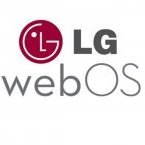By
News Reporter
Company Drives Strategic Growth With AI webOS, an Intelligent Platform
that Delivers Outstanding Customer Value and Unique User Experiences
SEOUL, Sep. 30, 2024 — LG Electronics (LG) last week held webOS Summit 2024 in Incheon, South Korea, sharing its strategic vision and future initiatives for expanding the AI webOS ecosystem and growing its platform business. Themed “Empowering webOS with AI,” the second webOS Summit played host to around 300 attendees representing 140 partner companies – including content developers, producers and providers – from 24 countries. The event also marked a major milestone: the tenth anniversary of the launch of webOS on LG smart TVs.
AI webOS plays a pivotal role in LG’s ambitious business transformation, shifting from a consumer electronics manufacturer to a Smart Life Solution Company. With a strategic investment of over KRW 1 trillion (USD 740 million), LG aims to significantly enhance the capabilities of its webOS platform and related businesses.
To achieve its strategic vision and elevate the value of its unique offerings, LG is continuously broadening the extensive selection of content and services accessible on AI webOS. The platform, which delivers exceptional experiences to LG TV users in over 180 countries, currently provides over 4,000 apps, including those for entertainment, home fitness, education and gaming.
This year, LG is reinforcing the reputation of AI webOS as an advanced gaming platform by adding a variety of new services and experience innovations. At present, the cutting-edge platform offers around 4,500 games across popular cloud gaming services such as GeForce NOW and Amazon Luna. To make gaming on its TVs even more responsive, LG has teamed up with MediaTek and Razer, leveraging new Bluetooth Ultra-Low Latency (BT ULL) technology to reduce input lag to an imperceptible 1ms when using a Bluetooth gaming controller. Demonstrated during webOS Summit 2024, this impressive responsiveness enhances the cloud gaming experience, giving users more precise control and making gameplay more immersive.
LG is also bolstering its competitive edge in content and services by actively seeking out and securing top industry talent. The company recently hosted a global hackathon to discover compelling new games and AI-powered content suitable for AI webOS and is also collaborating on game development with respected institutes of higher education, such as Sungkyunkwan University and New York University.
Furthermore, with the introduction of webOS Pay, LG has made it faster and more convenient for users to purchase content and services on AI webOS. The simple-to-use payment service contributes to the seamless, personalized shopping experience on LG’s intelligent platform.
Over the last decade, LG has sold a remarkable 220 million smart TVs and has consistently strengthened its webOS platform business through licensing agreements with an array of local and global companies. LG first made webOS available to other TV makers in 2021, and since then, the versatile platform has been adopted by over 400 brands. The company is now poised to further expand the webOS ecosystem via an array of webOS-powered automotive infotainment solutions, digital signage, smart monitors, gaming monitors and projectors.
Additionally, the webOS platform is shoring up LG’s strong competitiveness in the advertising business. In 2024, revenue generated by advertising and services on webOS is projected to exceed KRW 1 trillion, which represents a fourfold increase from 2021.
A significant contributor to this excellent performance is LG Channels, a free, ad-supported streaming service that provides over 3,800 channels and is now available in 29 countries. The company has augmented its already stellar offering of top-notch viewing options on its free service with the launch of LG Channels Showcase and LG 1 – new channels boasting a curated selection of premium entertainment. What’s more, LG is adding value to the user experience via the provision of AI-based ad solutions that make content recommendations even more relevant to user preferences.
With its Affectionate Intelligence vision for a more caring, empathetic and attentive AI technology, LG is continuously enriching and enhancing the customer experience. The application of Affectionate Intelligence allows webOS users to enjoy easier control as well as personalized content and service recommendations suited to their individual tastes and lifestyles. Through collaborations with innovative partner companies and the seamless integration of the latest technologies, LG is constantly refining its cutting-edge platform.
Along with informative presentations and demonstrations, webOS Summit 2024 featured an experience zone where attendees were able to see first-hand how powerful AI technologies are driving customer experience innovation on webOS. One of the many intelligent features offered on LG’s platform, AI Concierge employs voice recognition, search history and user data to provide customized app and viewing recommendations. Thanks to its ability to recognize different voices, AI webOS can take each LG smart TV user straight to their own personalized Home Screen without having to manually select their profile.
“Our webOS platform business continues to go from strength to strength based on close collaboration with our valued partners and an unrelenting focus on meeting the diverse needs of our customers,” said Park Hyoung-sei, president of the LG Home Entertainment Company. “Celebrating a decade of webOS innovation, and now enriching customer’s everyday lives with AI webOS, LG is accelerating its transformation into a leading media and entertainment platform company.”
# # #
link hidden, please login to view





Recommended Posts
Join the conversation
You can post now and register later. If you have an account, sign in now to post with your account.